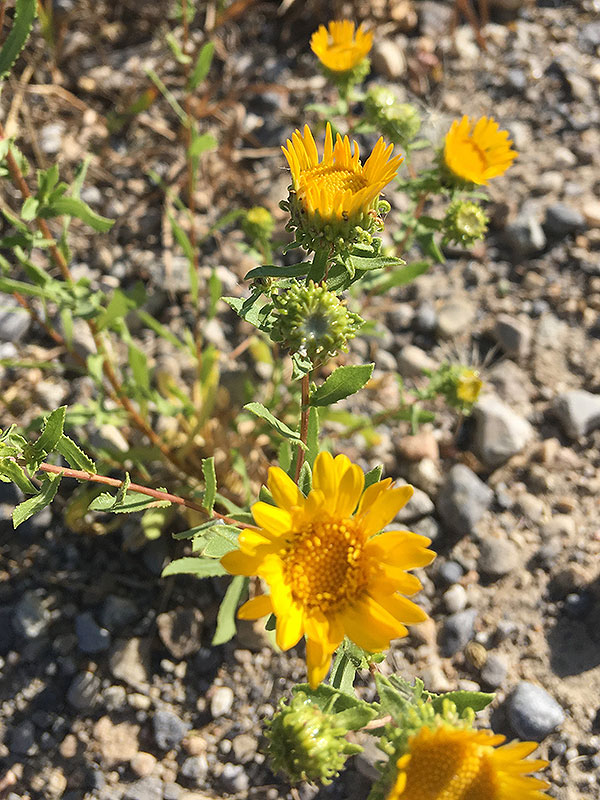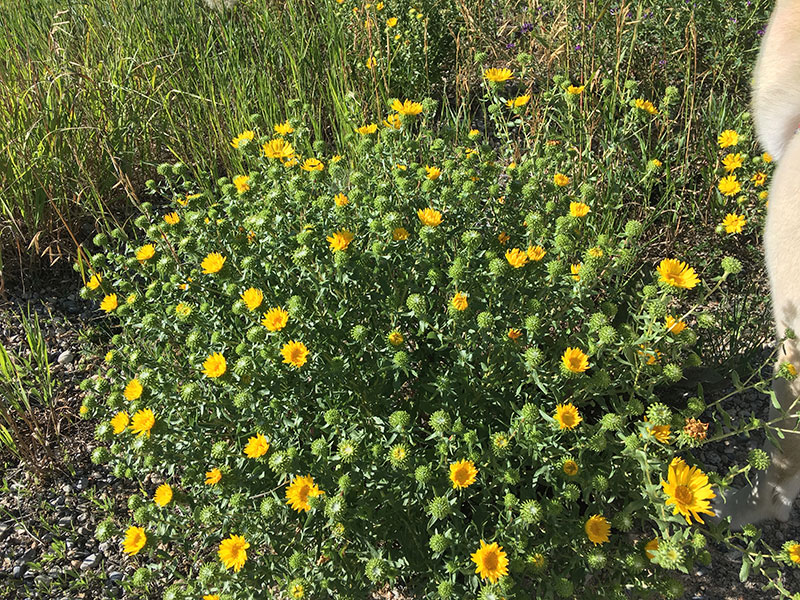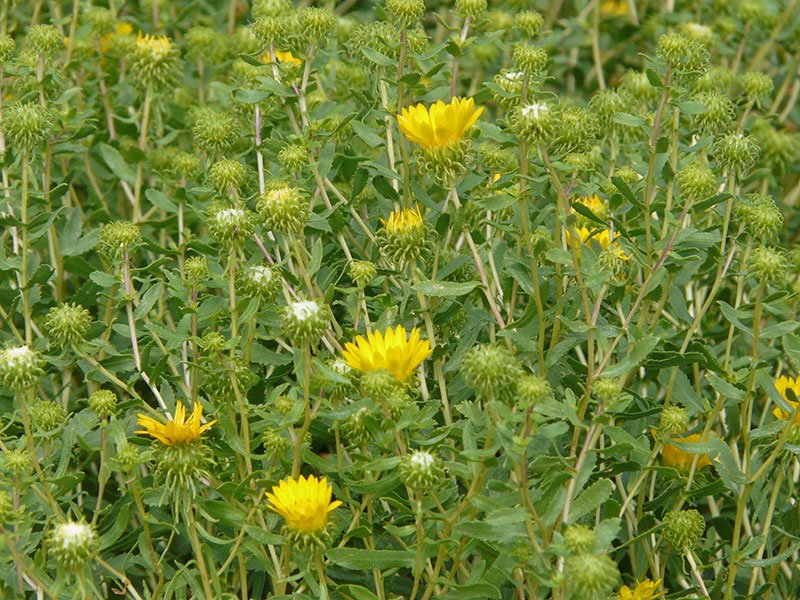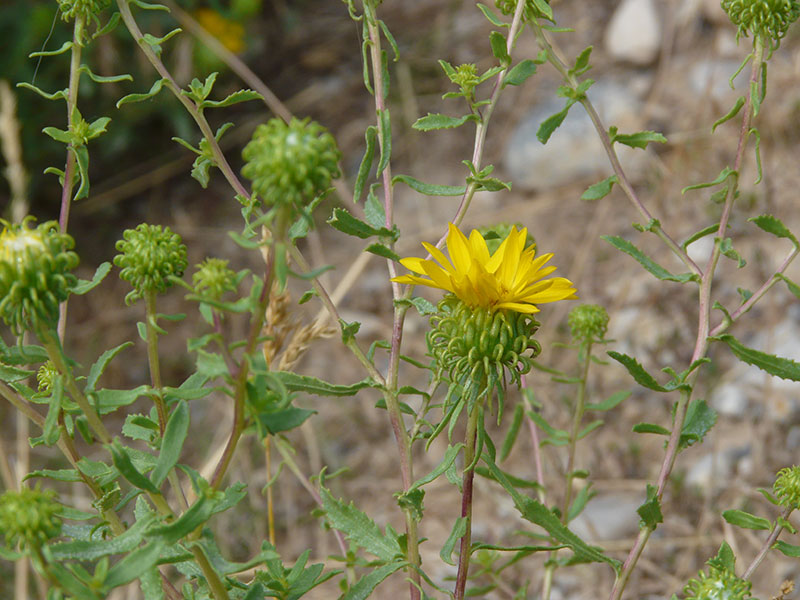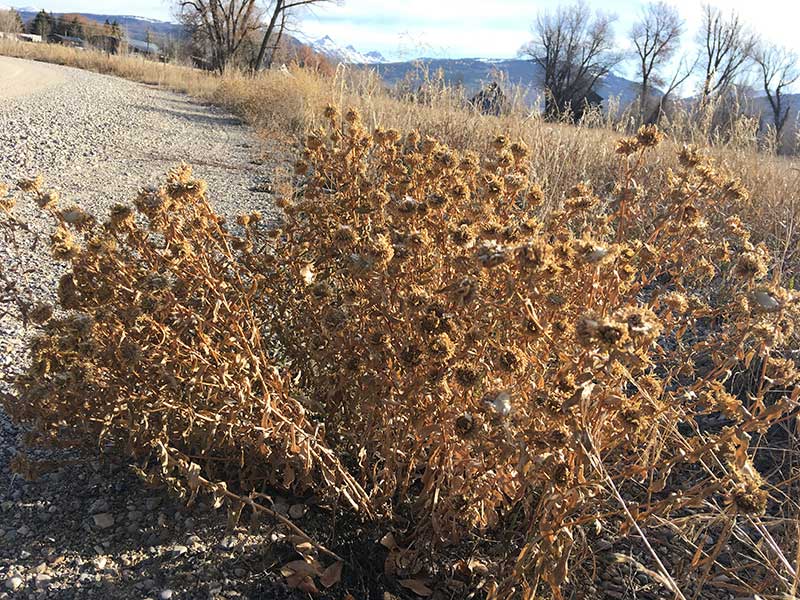Grindelia squarrosa / Curly cup gumweed
- small-ish yellow flowers
- button-like buds
- attractively compact, globe-shaped plant
It is surprising, in a way, that this plant has not become a gardener’s favorite. Perhaps that is because, at least in the Valley, it is so common along roadsides in late summer and autumn. The fact that it is biennial or a short-lived perennial doesn’t help much either, although gardeners do use annuals.
The plant’s form is quite pleasing – like a compact globe, perhaps a couple feet high. The folks who run garden shops go to huge efforts to trim and train chrysanthemums to do that. The buds are almost as attractive as the flowers, and remind me of the buttons on a duffle coat I used to have. The leaves are edged with “bumps” that have a yellow gland at the tip and exude a resin.
There aren’t many plants with names as odd as this one. In this case the name actually comes from a characteristic of the plant… the flower “cups” exude a resinous, thick, gum. In fact, the buds can be chewed as gum and purportedly, indigenous peoples did that. The “curly cup” moniker reflects the way the bracts below the flowers turn outward.
In addition to being a natural source of chewing gum (or tea, using the leaves), gumweed has a number of other important features. It is, for example, considered valuable as a source of nectar and pollen for native bees. This is an important feature given gumweed’s adaptation to dry areas. The resinous features make it also a potential source of biofuel similar to kerosene.
Interesting bits – gumweed is also a selenium accumulator, making it somewhat toxic to many mammals. This is a characteristic it shares with another attractive plant group in the Valley, the Indian paintbrushes. This isn’t too much of a problem because cattle apparently don’t like the taste.
| Color | |
|---|---|
| Family | |
| Blossom size | |
| Inflorescence size | |
| Inflorescence type | |
| When? | |
| Where? |
